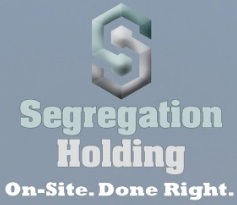Cost segregation benefits multifamily properties by accelerating depreciation.
A cost segregation study identifies and reallocates personal property assets to  shorten the depreciation time for income tax purposes, ultimately reducing current income tax obligations. Tangible personal property includes a building’s non-structural elements, land improvements and indirect construction costs (e.g. architect’s fees, permits, etc.). The primary goal of a cost segregation study is to identify all construction-related costs that can be depreciated over a shorter tax life (typically 5, 7 and 15 years) than the multifamily building (27½ years for residential real property). Tangible personal property assets found in a cost segregation study generally include items that are affixed to the building but do not relate to the overall operation and maintenance of the building (e.g. carpeting, decorative lighting, crown molding, and specialty plumbing, just to name a few). This method of depreciation is called Modified Accelerated Cost Recovery System, or MACRS.
shorten the depreciation time for income tax purposes, ultimately reducing current income tax obligations. Tangible personal property includes a building’s non-structural elements, land improvements and indirect construction costs (e.g. architect’s fees, permits, etc.). The primary goal of a cost segregation study is to identify all construction-related costs that can be depreciated over a shorter tax life (typically 5, 7 and 15 years) than the multifamily building (27½ years for residential real property). Tangible personal property assets found in a cost segregation study generally include items that are affixed to the building but do not relate to the overall operation and maintenance of the building (e.g. carpeting, decorative lighting, crown molding, and specialty plumbing, just to name a few). This method of depreciation is called Modified Accelerated Cost Recovery System, or MACRS.
 Land improvements generally include items “outside” a building that are pertinent to the land and do not relate to the overall operation and maintenance of a building. One exception to “outside” would be interior atriums with landscaped areas. Reducing tax lives of qualifying assets results in accelerated depreciation deductions, considerably reduced tax liability, and much increased cash flow.
Land improvements generally include items “outside” a building that are pertinent to the land and do not relate to the overall operation and maintenance of a building. One exception to “outside” would be interior atriums with landscaped areas. Reducing tax lives of qualifying assets results in accelerated depreciation deductions, considerably reduced tax liability, and much increased cash flow.
 Cost segregation benefits multifamily properties by accelerating depreciation in several ways. First, cost segregation identifies qualifying assets that are specific in nature to a multifamily property. An example would be a clubhouse featuring an elaborate commons area with crown molding, decorative lighting (e.g. chandelier, wall sconces, etc.), chair-rails, decorative window treatments, kitchen cabinetry, specialty
Cost segregation benefits multifamily properties by accelerating depreciation in several ways. First, cost segregation identifies qualifying assets that are specific in nature to a multifamily property. An example would be a clubhouse featuring an elaborate commons area with crown molding, decorative lighting (e.g. chandelier, wall sconces, etc.), chair-rails, decorative window treatments, kitchen cabinetry, specialty  plumbing and electrical, business center, high-speed internet, cable TV, recreation room, and much more. These are usually considered 5-year assets. On the exterior, the typical multifamily property would have security fencing, security gate with electronic entry, significant landscaping with architectural features, water fountains, pool w/fencing, significant drainage system, trash collection areas, mailbox centers, lighting, extensive parking, covered parking, curbs, sidewalks, and again, much more. These are usually considered 15-year assets.
plumbing and electrical, business center, high-speed internet, cable TV, recreation room, and much more. These are usually considered 5-year assets. On the exterior, the typical multifamily property would have security fencing, security gate with electronic entry, significant landscaping with architectural features, water fountains, pool w/fencing, significant drainage system, trash collection areas, mailbox centers, lighting, extensive parking, covered parking, curbs, sidewalks, and again, much more. These are usually considered 15-year assets.
Multifamily properties include apartments of all sizes down to quadplexes, triplexes, and duplexes. They all qualify for cost segregation studies and can benefit significantly. In addition to providing substantially lower federal and state taxes, cost segregation can benefit multifamily properties in a myriad number of ways…for example:
- Cost segregation maximizes income tax savings by correcting the timing of deductions. When an asset’s life is shortened, depreciation expense is accelerated and tax payments are decreased during the early stages of tangible personal property’s life. This then releases cash for investment opportunities or current operating needs.
- Cost segregation creates an audit trail. Improper documentation of cost and asset classifications can lead to a negative audit adjustment. Properly documented and engineer-based cost segregation studies helps resolve IRS inquiries at the earliest stages avoiding lengthy AND costly litigation.
- Cost segregation delivers automatic catch-up of earned but unrealized depreciation through IRC Sec. 481(a) adjustment. This is considered Retroactivity. Beginning in 1996, taxpayers can capture immediate retroactive tax savings on multifamily property (or any for that matter) built or acquired since January 1, 1987. Prior rules that provided a four-year catch-up period for retroactive savings have been amended for cost segregation studies. Now, with cost segregation applied, taxpayers are allowed to take 100% of their Sec. 481(a) adjustment in the year cost segregation is applied. This opportunity to recapture unrecognized, yet earned, depreciation in one year represents an amazing opportunity to perform cost segregation studies on older properties to increase cash flow in the current year. This type of cost segregation is called a “look-back” study.
- Cost segregation delivers other ancillary benefits as well. Cost segregation can reveal opportunities to reduce real estate tax liabilities and identify certain sales and use tax savings opportunities. Additionally, due to cost segregation being applied, property insurance premiums can be lowered since tangible personal property costs less to insure than real property.
- Cost segregation can reduce the mortgage interest rate. When cost segregation is applied prior to the purchase or construction start, many lenders will lower interest rates up to 100 basis points due to the debt-service reduction. In other instances a lender may reduce or eliminate the need for down payment due to the additional cash flow afforded by cost segregation.
 Cost segregation is a tax-planning tool that no multifamily property owner should ignore. However, as an aside, let’s briefly address a recent news article related to multifamily properties and cost segregation in the news.
Cost segregation is a tax-planning tool that no multifamily property owner should ignore. However, as an aside, let’s briefly address a recent news article related to multifamily properties and cost segregation in the news.
The recent “AmeriSouth XXXII, Ltd. v. IRS” case appeared to shed some negative light on cost segregation. The tax court ruled in favor of the IRS with the full details shown in T.C. Memo. 2012-67. Please read the entire memo if you’re feeling a little insomnia coming on…it’ll cure you quickly! Otherwise, the crux of the case comes to this. The plaintiff, AmeriSouth, sold the multifamily property while the case was being adjudicated. AmeriSouth’s owner, Ruel Hamilton, abandoned the case as plaintiff and literally stopped pursuing his suit against IRS. Therefore, with no plaintiff or counsel substantiating their cost segregation study, the tax court summarily ruled in favor of the defendant, IRS.
To any sane individual it is clear, no case can be won when it is abandoned. The fact is, cost segregation wasn’t on the stand, AmeriSouth was…and they backed out. AmeriSouth lost the case and cost segregation, as an industry, took it on the chin. But be of good cheer…
 Cost segregation is just as applicable today for the multifamily owner as it has ever been. An engineer-based cost segregation study that adheres to the IRS Audit Techniques Guide for Cost Segregation will always stand the test of time or audit.
Cost segregation is just as applicable today for the multifamily owner as it has ever been. An engineer-based cost segregation study that adheres to the IRS Audit Techniques Guide for Cost Segregation will always stand the test of time or audit.
Cost segregation benefits multifamily properties every time it’s applied.
For more information on cost segregation and how it can apply to your specific situation…contact us:
[email protected]
Segregation Holding
Twitter
972-865-9050


